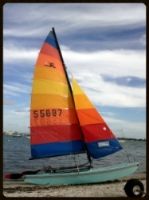|
All times are UTC - 8 hours [ DST ] |
 
|
Page 1 of 1 |
[ 13 posts ] |
|
| Author | Message | ||||
|---|---|---|---|---|---|
| optikid |
|
||||
Joined: Mon Jan 03, 2011 3:42 pm Posts: 274 Location: Sarasota Sailing Squadron |
|
||||
| Top | |
||||
| MBounds |
|
||||
Joined: Mon Jul 14, 2003 7:11 pm Posts: 5197 Location: Detroit, MI |
|
||||
| Top | |
||||
| Tom Kirkman |
|
||||
Joined: Tue Jul 19, 2005 6:29 pm Posts: 2763 Location: High Point, NC |
|
||||
| Top | |
||||
| optikid |
|
||||
Joined: Mon Jan 03, 2011 3:42 pm Posts: 274 Location: Sarasota Sailing Squadron |
|
||||
| Top | |
||||
| sxrracer |
|
||||
Joined: Fri Apr 13, 2012 7:35 pm Posts: 626 Location: Tuscaloosa, AL |
|
||||
| Top | |
||||
| M in MI |
|
||||
Joined: Wed Mar 25, 2009 11:31 am Posts: 79 Location: Michigan |
|
||||
| Top | |
||||
| MBounds |
|
||||
Joined: Mon Jul 14, 2003 7:11 pm Posts: 5197 Location: Detroit, MI |
|
||||
| Top | |
||||
| presto13031 |
|
||||
Joined: Wed Jun 30, 2010 2:24 pm Posts: 112 Location: Todd Mission, Texas |
|
||||
| Top | |
||||
| ASDASC |
|
||||
Joined: Fri Jun 17, 2011 12:26 pm Posts: 573 Location: Harsens Island, Michigan |
|
||||
| Top | |
||||
| MBounds |
|
||||
Joined: Mon Jul 14, 2003 7:11 pm Posts: 5197 Location: Detroit, MI |
|
||||
| Top | |
||||
| ronholm |
|
||||
Joined: Wed May 05, 2010 8:28 am Posts: 792 Location: Clinton Lake, KS |
|
||||
| Top | |
||||
| MBounds |
|
||||
Joined: Mon Jul 14, 2003 7:11 pm Posts: 5197 Location: Detroit, MI |
|
||||
| Top | |
||||
| ronholm |
|
||||
Joined: Wed May 05, 2010 8:28 am Posts: 792 Location: Clinton Lake, KS |
|
||||
| Top | |
||||
 
|
Page 1 of 1 |
[ 13 posts ] |
|
All times are UTC - 8 hours [ DST ] |
Who is online |
Users browsing this forum: No registered users and 2 guests |
| You cannot post new topics in this forum You cannot reply to topics in this forum You cannot edit your posts in this forum You cannot delete your posts in this forum |






